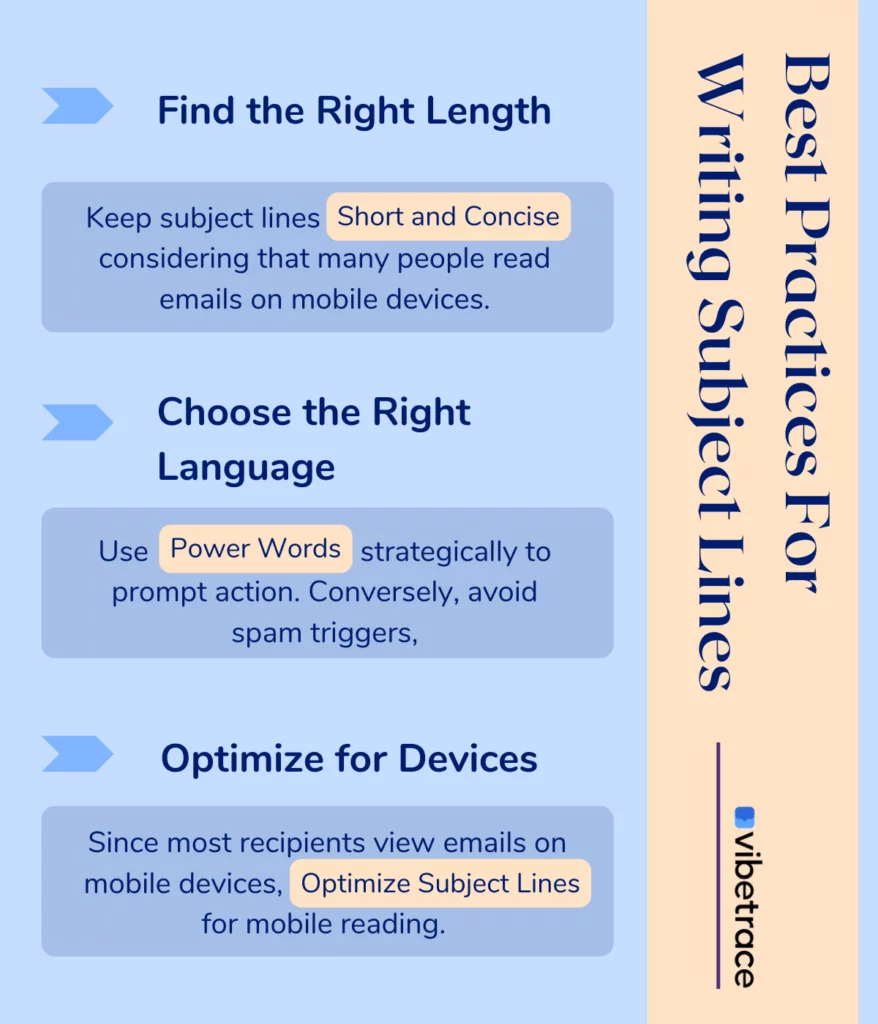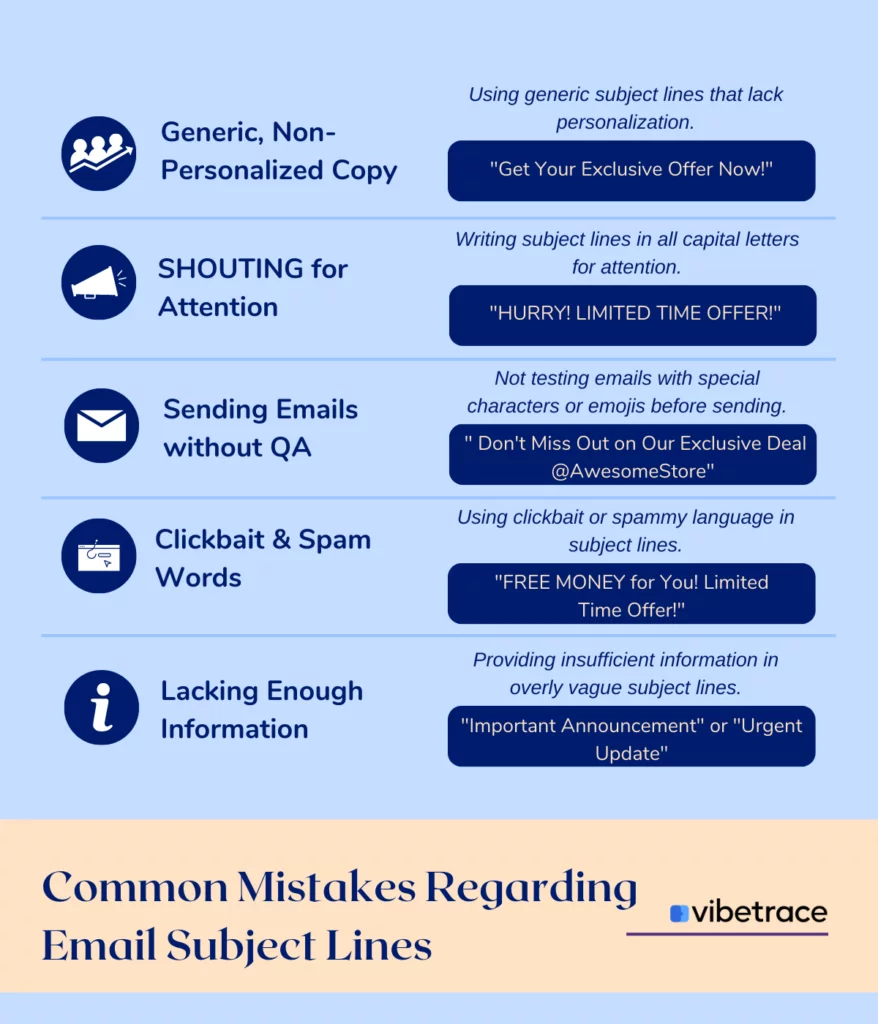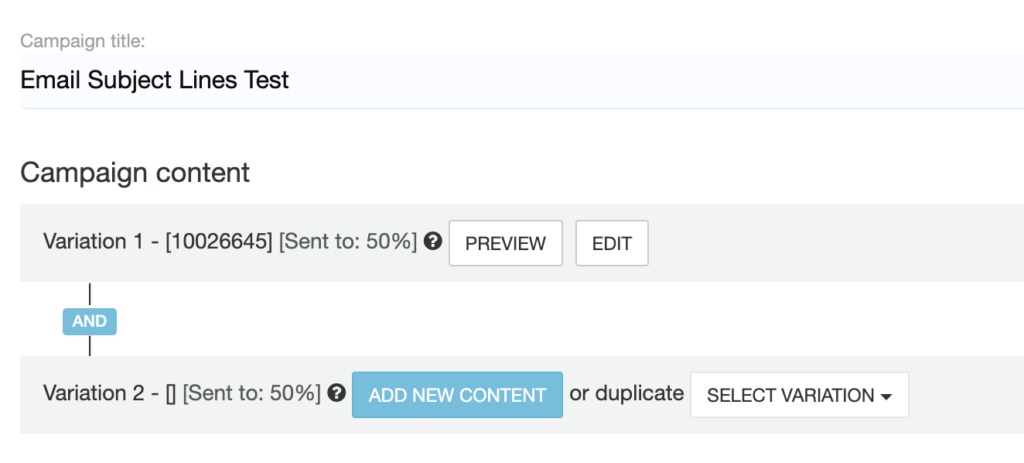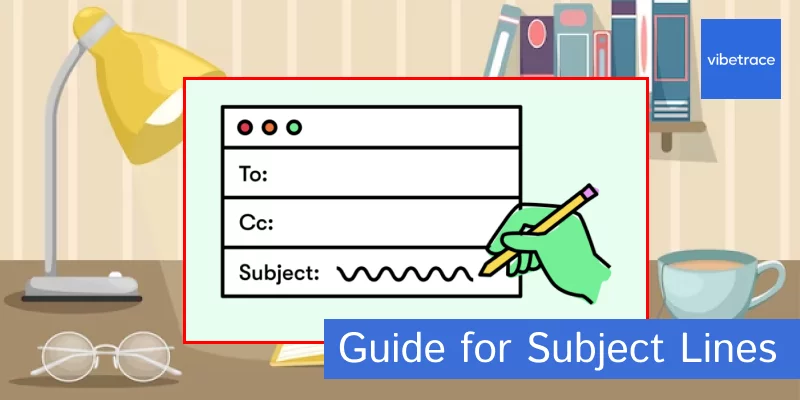The success of email marketing relies on one specific thing – subject lines. If you’re successful in your email marketing, you’ve done one thing right – you’ve nailed the subject line, and now it grabs the subscribers’ attention.
Whether you’re sending newsletters or product recommendations, you must craft your emails with the customer in mind. And that starts with something as short as the subject line.
In today’s article, you’ll discover valuable tips and inspiration for crafting successful subjects.
We’ll discuss everything from the best practices to the most common mistakes, and last but not least – how to test your subject lines to improve their performance.
Let’s begin with the practical side of crafting subject lines!
Best Practices For Writing Subject Lines

Every marketer has their own approach to writing them. Yet, there are some universal rules of thumb to stick to when you craft these bite-sized pieces of copy.
We’ve gathered them in one spot for you to refer to when you want to stand out from the hundreds of emails your customers receive.
Find the Right Length
Short and sweet sums it up when it comes to writing subject lines. There are several reasons for that:
- Most of your customers read their emails on mobile devices – 4 out of 10 people open their emails through mobile apps. If your subject lines are lengthy, there’s a chance that subscribers won’t be able to read them in full.
- Studies show that shorter subjects have better open rates – 18.26% for four-word subject lines, and improved click-to-open rates at 10.8% for nine-word ones.
Finding that sweet spot for your audience requires extensive testing and lots of experiments. Remember that most email clients will show up to 43-44 characters. Combine that knowledge with recipients’ preferences and go from there.
Choose the Right Language
Knowing how long your email subject lines should be takes you to the next step – deciding what specific words to use. Don’t forget that you have limited real estate inside your subscribers’ inboxes – make the most out of it:
- Charge Your Language – select relevant “power words” to supercharge your copy and prompt customers to action. Such words fall into four broad categories – arousing curiosity, creating FOMO, building trust, and appealing to vanity. Check out CMI’s power words and trigger the exact emotional response you want!
- Avoid Spam Triggers – just as there are action-oriented words that can incite specific emotions and achieve the desired response, there are tons of spam words you want to avoid. Check out the ultimate list created by HubSpot – more than 390 spam words to avoid!
Choosing the right words is not enough to get your message across. Let’s see what else!
Optimize for Devices
As mentioned above, most of your recipients will view their emails on mobile devices. That’s why it’s crucial to keep it short and to the point. Additionally, you can use various tools to help you check the length and catchiness of your copy.
You can make the best out of the limited real estate by reducing punctuation and even swapping words with emojis. Those are even tactics to boost open rates. Below, we’ll go over various tips and tricks on how to achieve that!
Want to be up to date with Marketing?
Subscribe to our Retail CX newsletter!

Stay connected with what’s really important to optimize your digital revenues.
By clicking the button, you accept our Terms & Conditions. Also you will need to confirm your email address.
How to Increase Open Rates by Optimizing Subject Lines?
Optimization will be crucial to make the most out of the few characters you can use. But always optimize with your target audience in mind. And that brings me to the most prominent aspect – personalization!
How to Use Personalization in Subject Lines?
Today’s marketing relies on personalization to achieve better results. As marketers, we taught customers to enjoy that personal touch, and now they actively seek it.
A great way to personalize email subject lines is to leverage the information you gather and the buyer profiles you can create through rich customer data platforms.
You can use customers’ desire to receive personalized communication to your advantage when crafting subject lines, to speak directly to individuals with the help of the info in your CDP. You can personalize subject lines by:
- Addressing customers on behalf of a real person from your company, not just an anonymous brand;
- Add their names in the subject or the preview – you can craft dynamic subject lines using built-in rules and tags. That way, the name will change according to the recipient’s name when it lands in their inbox.
- Add their cities/regions/countries – same as with names, you can add these to change dynamically through rules and tags. Think about selling sun hats – wouldn’t it be great to send out an email blast with a subject line like “Defend Against the Heatwave in Texas in Style 😎”? With a dynamic subject line, Texas will be swapped with something else, depending on your recipients’ location.
Giving you this last example brings me to another great way of optimizing subject lines – emojis!
How to Use Emojis in Subject Lines?
Studies show emojis can have a significant impact on your subject lines. They can emphasize keywords, swap out words entirely, and help you craft witty, sharp copy that prompts customers to open the email.
Remember not to overdo it, and always use relevant emojis. To help you experiment with emojis confidently, we created a detailed guide on successfully using emojis in email subject lines.
Emojis are best suited for e-commerce, for sure. They give your brand a more approachable, lighthearted, and friendly appeal, helping you build more informal and personal relationships with customers.
But are emojis enough to make people click on an email? We’ll see how it’s done in e-commerce in the next section!
How to Write Subject Lines for E-commerce Businesses?
Because of the highly promotional nature of e-commerce, crafting enticing subject lines might be tricky. The good news is that if people subscribe or opt-in for promotional emails, they’re interested in what you want to offer them.
The question is how to stand out from the other 99 promotional emails from other e-commerce businesses in their inbox. That’s where the power words we mentioned above can help you immensely, and you can apply them in various scenarios in combination with optimization tactics:
A. Subject Lines for Welcoming Emails
Use the welcoming email subject line to remind your new subscribers why they subscribed in the first place by highlighting your UVP (unique value proposition), and to set the tone.
Source: SmartrMail
B. Subject Lines for Abandoned Carts
Careful here. If you chase your customers with pushy subject lines, you risk driving them to unsubscribe. Creating a fear of missing out (e.g., a low-stock warning about the products in their cart) might do the trick.
Source: FirePush
C. Sales Subject Lines
Don’t beat around the bush if you’re having a sale. Use numbers, give those sweet percentages off the spotlight, and create urgency, but don’t forget to tell customers how they’ll benefit if they take advantage of the sale (and no, the 60% off is not the benefit).
Source: CampaignMonitor
D. Subject Lines for Transactional Emails
We don’t always open our order confirmations. After all, we know we just ordered something. It’s good to write such subject lines as clearly as possible – where this confirmation is coming from and what’s the order number.
That way, customers can scan the info and learn everything they need to know right from the subject line.
Source: Starter Story
E. Subject Lines for Requesting Feedback
Asking for reviews, completing surveys, and feedback can be hard, but it’s crucial for building social proof. Don’t just beg for feedback but ask them about their experience as you would a friend. Maybe offer something in return?
Source: SurveySparrow
F. Subject Lines for Lead Reactivation
Reactivating leads is a great way to get sales without trying to generate new traffic. But it’s also not as simple. You don’t want to look desperate.
Play the personalization card instead – feature their location (“Sick of Frizz in [city]’s Weather?”), or their name or even their pet’s name. Talk to them as an old friend, not a cold lead.
Source: Automizy
Below, we’ve gathered some great examples of email subject lines. Get inspired, and start writing supercharged copy that gets results!
Common Mistakes Regarding Email Subject Lines
If you want to carry out effective email marketing campaigns, there are certain things you want to avoid:
- Driving recipients away with pushy, low-quality emails;
- Coming across as spam content.
The more you get reported as spam, the harder it will be to land in customers’ inboxes. Your ROI will suffer the most from bad email marketing, and you must remember that this is still one of the most profitable communication channels.
To help you not miss out on the profits it can generate, we’ve curated a list of the most common mistakes you can make when writing email subject lines:

A. Generic, Non-Personalized Copy
Writing subject lines can be done using formulas – that’s what the best practices are. But bland, one-size-fits-all subject lines will drive customers away. Use the tons of data you generate on subscribers to craft top-notch, personalized copy.
Otherwise, you risk getting trashed. Or worse – flagged as spam.
B. SHOUTING for Attention
Of course, emails aim to grab attention, but shouting at your customers is not the way to go. You can come off as rude, pushy, and even desperate for that attention. Not to mention, using ALL CAPS in email subject lines can often trigger spam filters and redirect you to oblivion.
C. Sending Emails without QA
As technical as it might sound, sending emails featuring emojis or special characters without testing them first is a huge mistake. First, emojis and special symbols might not render correctly, depending on your customers’ email clients. Second, special characters like @ or # might get your email flagged as spam.
Yes, special characters, symbols, and emojis might be flashy, but when you saturate your subject line with them, the effect will be negative.
D. Clickbait & Spam Words
Another common mistake is using flashy words like free, affordable, limited-time offer, etc. Even if people want these things, present them in a smarter way. You can easily swap spam words with action-oriented language and power words that inspire specific emotions.
Additionally, to boost open rates, some email marketers are tempted to use misleading subject lines. Avoid that at all costs – if the subject line doesn’t align with the email contents, you will alienate recipients 100% of the time.
E. Lacking Enough Information
Something we’ve seen in our practice is extremely short subject lines trying hard to spark curiosity. Yes, real estate is limited, but don’t be stingy. When you over-optimize and settle for a subject line like “Important” or “Urgent”, it might work once.
The second time, your email’s getting trashed.
That’s because you don’t provide enough information to make people care about what you want to tell them, let alone act on it.
On the contrary, use all the available space in a smart way. Create a subject line between 4 and 9 words and optimize the email preview for value.
When engaging in email marketing, the subject line is the first impression you’ll leave on your subscribers. Finding the right combination of elements, length, and language might seem overwhelming at first, but when done right, they can help your email marketing campaigns thrive.
And that means more profitable campaigns and better ROI.
If you apply the best practices and avoid the gravest mistakes, you can get closer to crafting effective email subject lines and achieving improved results. To ensure you’re on the right track, test, test, and test again.
Not sure how? We’ll cover all about A/B testing email subject lines in the next section, so keep reading!
How to A/B Test Email Subject Lines?
A/B testing is marketers’ best friend. It’s the process that allows you to send different variations of campaigns to different customer subsets. It can be as simple as testing variations of the copy or as complex as testing entirely different templates. Here we’ll do an overview of how to approach A/B testing of email subject lines.
Don’t be fooled. It might be a short piece of copy, but a subject has multiple aspects. And you can test all of them!
Nearly 40% of brands don’t split-test their email subject lines. That gives you a competitive edge and will help ensure your email campaigns perform as expected. Here are several ways you can run A/B tests on email subject lines:
- The Length – less is more with subjects, but that doesn’t mean not to experiment. With a robust solution like VibeTrace, you can split-test three content variations at once. Go real short with 4 words, all out with 9, and try the middle with 6 words before you settle on a length for your email marketing team.
- Content – if your email contains different pieces of content, e.g., various product categories, you can test the same email content with subject lines related to different themes to see which attracts the most attention. Don’t be shy to personalize!
- Personalization – if you can send personalized recommendations generated by a product recommendations engine, you can take your personalization game even further. Talk directly to the specific customer and try out different subject lines with various personalized elements, which we mentioned above.
- Wording & Word Order – people will read and interpret subjects according to how you order the words. Place the most vital piece of information at the beginning (let’s say a discount code) and test how it performs against a subject line that emphasizes something else at the beginning.
- With or Without Emojis – another element you can easily A/B test in your subject lines. If you think more emojis can boost your open rates, put this theory to the test and gather relevant data.
And more! As long as you have a hypothesis regarding your email subject line, you can test it.
Below, you’ll see precisely how to create and run meaningful A/B tests to evaluate the most critical part of your email and its elements. The goal – maximized results and optimized conversions, of course.
If you need help getting new ideas for email subject lines use our AI Subject Lines generator.
If you’re after those, keep reading!
How to Create A/B Tests with Email Subject Lines
You can create A/B tests around Email subject lines and see which one brings the most results.
Note that Email Subject Line is the most important factor regarding email open rate.
- Create campaign with 2 pieces of content

2. For Second Variation we recommend duplicating initial content
3. For the initial variation set the desired Subject Line

For the second template only change Subject Line.

4. Check reports to determine which variant brought better results

In this report you’ll see that Var 2. was recently added and did not brought any results.
More Email Subject Lines Ideas:

